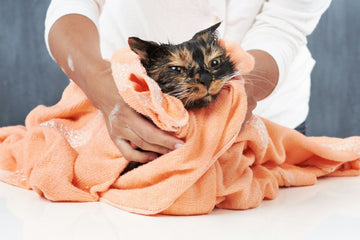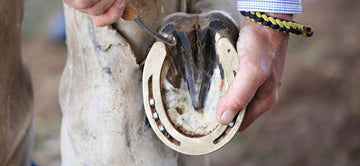Bathing a feline friend can be a challenging task, but with the right approach, preparation, and patience, it can be a smooth experience for both you and your feline companion.
Whether it’s for grooming, treating skin conditions, or simply for hygiene purposes, here’s a guide on how to bathe your cat without getting scratched.
Understanding Your Cat’s Bathing Needs
Do Cats Need Baths?
Most cats are naturally clean animals and generally groom themselves, so regular baths are not necessary. However, there are some situations where a bath may be required:
-
Skin Conditions: Cats with specific skin conditions, like seborrhea, flea dermatitis, or fungal infections, may benefit from a medicated bath for cats to manage these issues. A proper bath can help soothe irritated skin and allow for proper healing.
-
Breeds: Certain breeds, like Persians, Sphynx, and Maine Coons, have longer coats that may need more frequent bathing to prevent matting and tangling. Cats with thick fur or those prone to hairballs benefit from regular baths, which help keep their coat in good condition.
-
Indoor Cats: Indoor cats might require baths more frequently than outdoor cats because of their sedentary lifestyle. They may be exposed to allergens, dust, and dander, which can contribute to skin irritation. An indoor cat is more prone to developing oily or dirty fur since they aren't naturally able to "wear" down their coat through outdoor activities.
-
Special Health Conditions: If your cat has a medical condition, such as allergies or seborrhea, that affects the skin, frequent baths may be part of the treatment plan. It’s essential to speak to your vet about the frequency and type of shampoo to use in such cases.
Bathing your cat can help remove allergens and pollutants, helping them to stay comfortable and clean, and can also reduce the chances of skin conditions becoming severe.
Choosing the Right Cat Shampoo
It’s important to use cat-specific shampoo to avoid damaging their delicate skin. Human shampoo can be too harsh for a cat’s skin and coat.
Additionally, cats with sensitive or irritated skin may require special care and gentle products to ensure their comfort.

Preparing for the Bath
Gather Supplies
Before you begin, make sure you have everything you need:
-
Cat shampoo: Choose a gentle, feline-specific shampoo.
-
Warm water: Ensure the water temperature is comfortable—not too hot or cold for your cat.
-
Rubber gloves: These will help protect your hands from scratches.
-
Towel: Keep a clean towel nearby to dry your cat after the bath.
-
Non-slip surface: A rubber mat in the tub or sink can help prevent your cat from slipping.
Setting Up the Bath Area with Warm Water
Choose a quiet and comfortable space, like a bathroom tub or a designated bathing area. It’s important that the room is warm and draft-free to prevent your cat from getting cold and stressed.
If possible, have a second person to assist you. This extra help can make the process easier, particularly for more squirmy cats.

Minimizing Stress and Anxiety
Creating a Calm Environment
Cats can be easily stressed by water, so it’s essential to approach them with patience and gentleness:
-
Calm Approach: Approach your cat slowly and calmly, avoiding sudden movements.
-
Soothing Voice: Use a soft, reassuring voice to help them feel more at ease.
-
Keep It Brief: The shorter and more efficient the bath, the less stressful it will be for your cat.
You may also consider using pheromone products or calming aids, which can help reduce anxiety in both cats and kittens.
The Bathing Process
Step-by-Step Guide to Gently Rinse
-
Prepare the Water: Fill the tub or sink with warm water, testing it to ensure it’s comfortable for your cat.
-
Place Your Cat in the Water: Gently place your cat into the water, ensuring that their body is submerged, but avoid getting their head, ears, and eyes wet.
-
Apply Shampoo: Use a cat-specific shampoo, and gently apply it to your cat’s fur, working it into a lather while avoiding the face and ears. Be careful to prevent shampoo from getting in their eyes or mouth.
-
Rinse Thoroughly: Gently rinse your cat, ensuring all soap residue is removed. Use a cup or gentle spray nozzle to rinse, making sure not to pour water directly onto their face.
-
Dry Your Cat: After the bath, carefully towel-dry your cat, absorbing as much water as possible from their coat.
Safety Precautions and Aftercare
Avoiding Scratches
Cats may scratch during bath time if they feel frightened or uncomfortable. To avoid getting scratched:
-
Be cautious with your cat’s nails: If possible, trim your cat’s claws before the bath to minimize damage.
-
Protect yourself: Wear rubber gloves to protect your hands from potential scratches.
-
Stay calm: Cats often react to your stress. By remaining calm and gentle, you’ll help your cat feel more secure.
Aftercare
Once the bath is complete, provide a warm and comfortable space for your cat to rest and recover.
Monitor your cat’s behavior closely and look for signs of stress or discomfort, such as excessive licking or hiding. Also, consider adding in a natural skin spray for cats to ensure your cat stays healthy after their bath.
Special Considerations for Indoor Cats and Kittens
Indoor Cats
Indoor cat may require more frequent baths due to their sedentary lifestyle and exposure to allergens. Regular grooming, combined with occasional baths, can help prevent matting and tangling of their fur.
Kittens
Kittens are more sensitive than adult cats and require extra care during the bathing process:
-
Use a gentle, fragrance-free shampoo specifically designed for kittens.
-
Keep the water level low to ensure they feel secure.
-
Gently handle them, as their skin is delicate and they may be more frightened by the experience.

Frequently Asked Questions
How do you bathe an unwilling cat?
To bathe an unwilling cat, remain calm, use a gentle touch, and keep the process as brief as possible. Having a second person help can also make the experience less stressful.
How to wash a cat without getting hurt?
Wear rubber gloves for protection, handle your cat gently, and avoid forcing them into the water. Gradually introduce them to the bathing process to reduce anxiety.
Why does my cat scratch in the bath?
Cats may scratch during the bath because they’re stressed or trying to escape. It’s essential to remain calm and gentle to minimize this reaction.
Will my cat scratch me if I give him a bath?
There is always a chance of scratches, especially if your cat becomes stressed, but taking precautions like trimming their claws and wearing protective gloves can help reduce the risk.
How to Bathe a Cat Without Getting Scratched Conclusion
Bathing a cat doesn’t have to be a stressful or painful experience. By preparing properly, minimizing stress, and following the right steps, you can ensure that your cat is cleaned safely and comfortably.
Always prioritize your cat’s well-being, and remember to consult your veterinarian if you’re unsure about the right products or methods for your specific cat.










